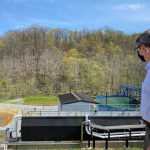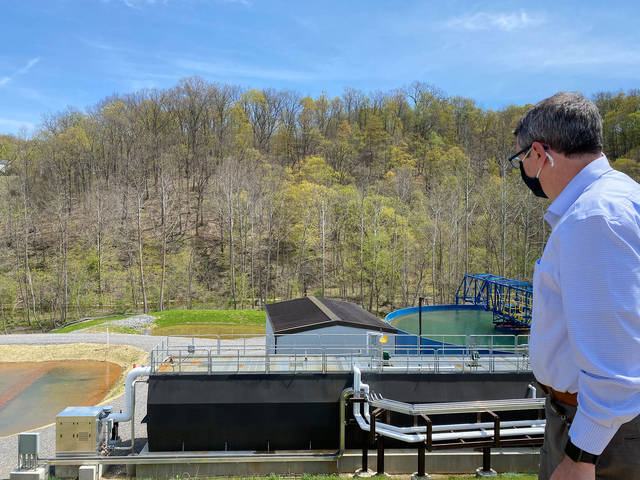Acid mine drainage treatment plant completed in South Fayette


Share this post:
The water in South Fayette is running clear thanks to a recently completed acid mine drainage treatment plant.
Pennsylvania Department of Environmental Protection secretary Patrick McDonnell joined with project partners and stakeholders to commemorate the completion and acknowledge the results of the South Fayette Conservation Group’s Gladden treatment plant.
“These streams used to run orange, and to now see clean, clear water underscores the importance of these projects to restore local waterways,” McDonnell said on April 27. “What was once a fantasy to fish and recreate on these sections of Millers Run and Chartiers Creek is closer to reality, thanks to the group of dedicated partners gathered here today.”
According to a DEP news release, the treatment plant has eliminated one of the largest impairments to the Chartiers Creek watershed by continually pumping and treating over one million gallons of AMD daily and discharging the treated water to Millers Run.
The Gladden discharge, which ranges from 750 to 1,500 gallons per minute, originates from the abandoned deep mine of the Pittsburgh Coal Company’s Montour No. 2 underground mining complex. The plant includes two pumping stations to extract the AMD water from the mine pool and bring it to the surface for treatment. DEP estimates that the plant will remove approximately 690 pounds of iron pollution in the stream per day. The insoluble iron sludge generated by the treatment process is returned to the mine and placed into sections of the abandoned workings that will not interfere with pumping and treatment operations.
The treatment plant will ultimately restore four miles of Millers Run and four miles of Chartiers Creek to a warm water, trout-stocked fishery with improved recreational uses.
“This is a significant improvement for South Fayette. We have been working to restore this watershed since formation of the group in 2003,” said Stephen Frank, president of South Fayette Conservation Group. “We can now turn our focus on securing funds for long-term operation of the treatment system and completing additional projects so that the community can recreate along the banks of Millers Run.”
The active AMD treatment plant utilizes a chemical oxidizer, hydrogen peroxide, to rapidly and efficiently oxidize and precipitate dissolved iron and other metals from the mine water. Clarification equipment then allows the precipitated metals and other solids to be retained while treated water is discharged to Millers Run. The Gladden plant is designed for a maximum treatment capacity of up to 2.1 million gallons of AMD per day.
In addition to DEP, its Bureau of Abandoned Mine Reclamation and South Fayette Conservation Group, partners on the project included the federal Office of Surface Mining Reclamation and Enforcement, South Fayette Township, Tetra Tech, Inc. (prime contractor), Chapman Corporation, AMD Industries, John Kosky Contracting, Inc., Infinity Drilling, Ligonier Construction Company, GAI Consultants and the Pennsylvania Fish & Boat Commission.
The final project cost was just over $13 million and came from the AMD abatement and treatment program (AMD Set-Aside Program) authorized in the Surface Mining Control and Reclamation Act and the federal Office of Surface Mining Reclamation and Enforcement AML Pilot Program, now referred to as the federal Abandoned Mine Land Economic Revitalization Program, which specifically targets abandoned mine cleanup projects that are linked to local community and economic development goals.
Stream sealing of Fishing Run, which is part of this overall project, is currently in the permitting stage. That aspect of the project is designed to address large streamflow losses due to mine subsidence that enter the abandoned mine and contribute to the volume of AMD. When completed, the streambed sealing will keep the stream flowing year-round and reduce the amount of AMD requiring treatment.



